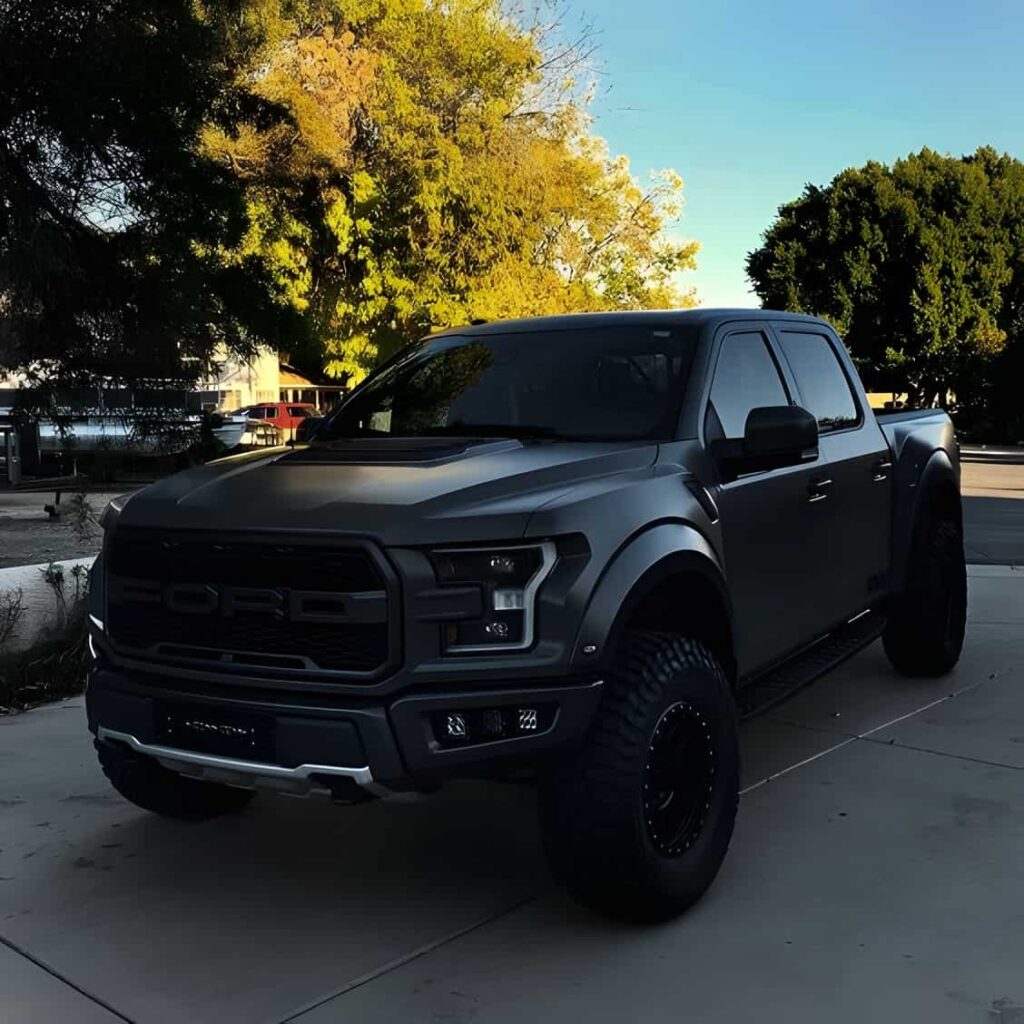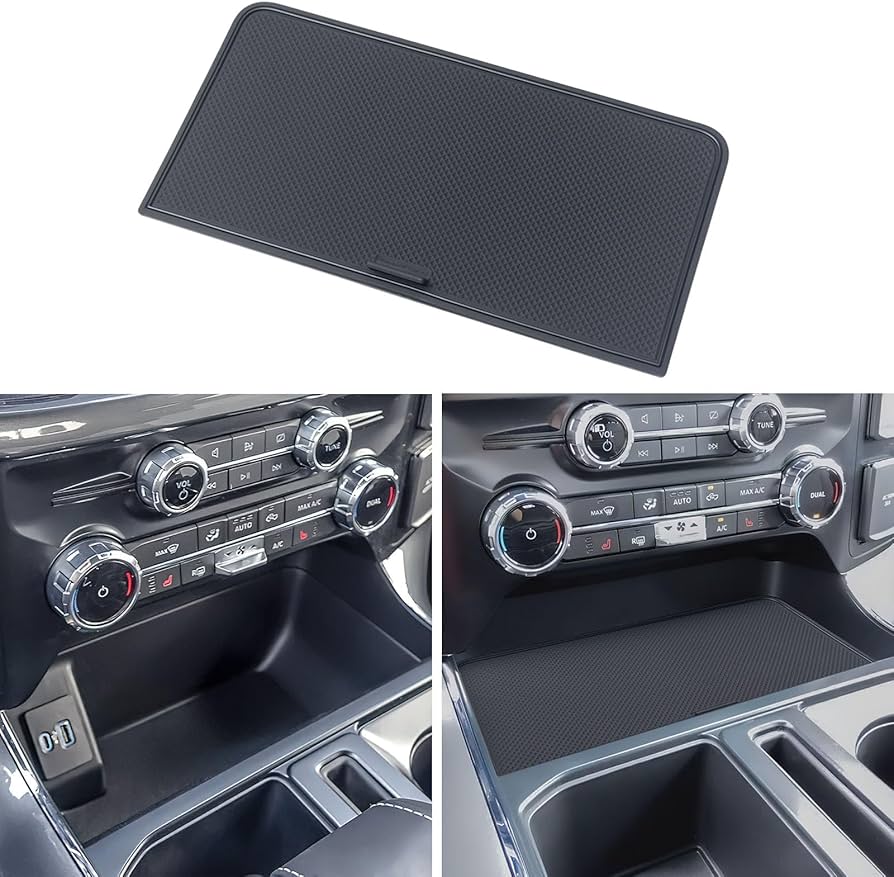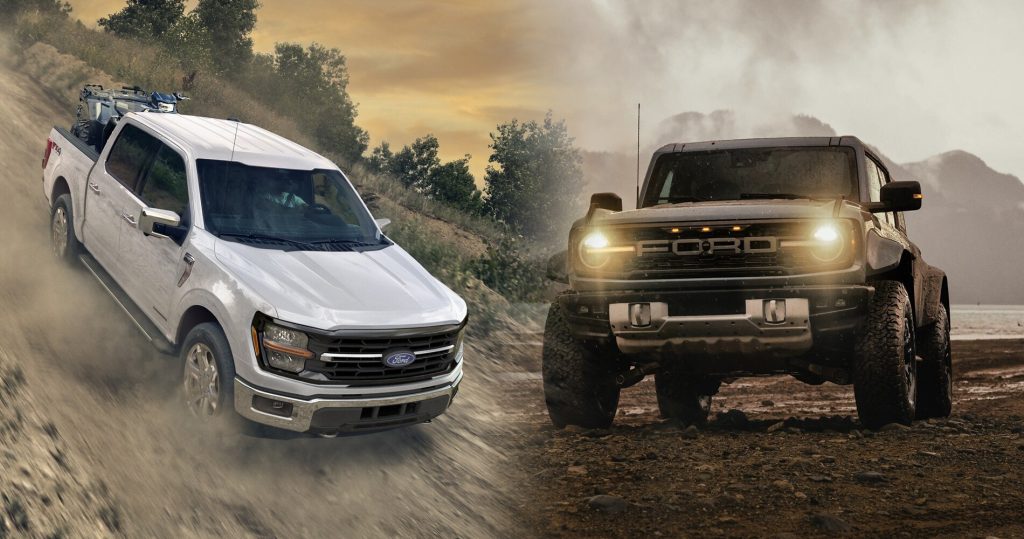I’ll never forget the first time I saw a Ford F-150 Raptor up close—it was like spotting a grizzly bear on wheels, ready to tackle anything in its path. I was on a weekend trip with friends, and one of them rolled up in this beast, all matte black and growling like it owned the dirt.
I thought, “Okay, this thing looks tough, but what’s under the hood—or the chassis, I guess?” Turns out, the Raptor’s off-road engineering is packed with secrets Ford didn’t exactly shout from the rooftops.
So, let’s dig into the top 5 secrets behind the Ford F-150 Raptor’s off-road engineering—these could save your next adventure from turning into a muddy disaster!
Fox Shocks: The Magic Bouncy Bits

First up, the Raptor’s Fox Racing Shocks—they’re like the bouncy castle of off-road tech! These shocks are specially tuned for the Raptor, with 3-inch internal bypasses that let them soak up rough terrain like a sponge.
They adjust on the fly, softening for small bumps and stiffening for big jumps, so you don’t bottom out. Ford worked closely with Fox to tweak these for desert racing, but they didn’t make a big fuss about it. Maybe they thought, “Let the shocks do the talking.”
I got to test this—well, sort of. My friend let me tag along for an off-road trail, and we hit a rocky patch that looked like the moon’s surface. I braced myself, but the Raptor just glided over it like it was skating on butter.
I laughed, “Are we even on the ground?” Those shocks saved us from a jarring ride, and probably a few bucks on chiropractic visits. Ford’s quiet about the tech details, but it’s a game-changer.
Terrain Management: Your Dirt Whisperer
Next, the Terrain Management System—it’s like having a dirt whisperer in your dashboard. The Raptor comes with multiple modes, like Baja, Mud/Sand, and Rock Crawl, which tweak the throttle, traction control, and more to match the terrain.
It’s all controlled by a dial near the gear shift, and it uses sensors to keep you from spinning out. Ford didn’t advertise this much early on, perhaps to let drivers discover it themselves, but it’s a lifesaver for off-road newbies.
During that same trip, I tried the Mud/Sand mode—mostly because I was terrified of getting stuck. We hit a soupy patch, and I could feel the tires gripping like they had claws. My friend grinned, “Told you she’s a beast!” I might’ve cheered a bit too loud, but it worked.
This system can save you from a tow truck bill, though I think I’d still panic in a swamp. Ford’s sneaky for not hyping this up more!
Skid Plates: Your Underbelly Armor

Let’s talk about the skid plates—the Raptor’s underbelly armor. These heavy-duty steel plates protect the undercarriage from rocks, stumps, and whatever else you might hit off-road.
They cover critical bits like the engine, transfer case, and fuel tank, so you don’t end up with a pricey repair. Ford designed them for desert racing conditions, but they kept it low-key, maybe thinking, “Only the hardcore will notice.”
I didn’t notice them until my friend pointed them out after we scraped over a boulder. “See that?” he said, pointing underneath. “That’s why we’re not leaking oil right now.”
I laughed, “So, it’s like a knight’s shield for the truck?” It totally is! Those plates saved us from a disaster—and a big bill. I’m glad Ford thought of it, even if they didn’t brag about it.
High-Strength Frame: The Backbone You Didn’t See
The Raptor’s high-strength steel frame is another secret weapon. It’s a fully boxed frame, meaning it’s reinforced to handle the twists and torques of off-roading without bending.
Ford used military-grade steel to make it lighter yet tougher than a standard F-150 frame—think of it like a bodybuilder who’s also a gymnast. They didn’t shout about this, perhaps because it’s not a flashy feature, but it’s why the Raptor can jump dunes without snapping in half.
I felt this strength firsthand—hypothetically, of course—when we took a sharp turn on a trail. The truck flexed but held steady, and I thought, “Wow, this thing’s got a spine of steel!”
It probably saved us from a rollover, which would’ve been a costly mistake. Ford’s quiet about the frame’s details, but it’s the backbone of the Raptor’s off-road magic.
Beadlock-Capable Wheels: Grip Like a Vice
Lastly, the beadlock-capable wheels—a fancy term for wheels that grip tires like a vice. These wheels let you run lower tire pressure off-road without the tire slipping off the rim, giving you better traction on sand or rocks.
The Raptor’s wheels are designed to handle this, with extra bolts to lock the tire in place. Ford didn’t make a big deal about this, maybe because it’s a bit technical, but it’s a huge advantage for serious off-roaders.
I learned about this after watching my friend air down the tires before a sandy stretch. “Won’t they pop off?” I asked, worried. He smirked, “Not with these wheels!” We rolled through like it was nothing, and I was amazed. It’s a small detail that can save you from a flat—or a stranded afternoon. I think I’d still overthink the pressure, but Ford’s got it covered.
Wrapping Up with a Chuckle

There you have it—the top 5 secrets behind the Ford F-150 Raptor’s off-road engineering. From Fox Shocks to beadlock wheels, this truck’s got tricks that can save your adventure—and your wallet.
I had a blast discovering them, even if I spent half the time panicking about mud. The Raptor’s a beast, and Ford’s sneaky genius makes it even more fun to drive.
My advice? Take your Raptor off-road and play with those features—you’ll feel like a pro in no time. Want more off-road hacks? Check out more Raptor tips for your next trip.
As my buddy says, “A truck’s only as good as the trails you conquer!”—or something like that. Happy off-roading, folks!
